 Facebook
Facebook
 X
X
 Instagram
Instagram
 TikTok
TikTok
 Youtube
Youtube
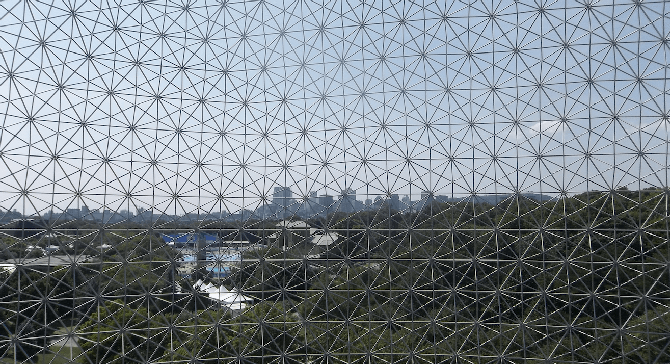
Despite being a large city, a worthwhile sampling of Montreal can be explored in one day.
A clean and efficient metro system makes the city easy to navigate. Some advanced planning is recommended, however; not all metro employees speak English (as I quickly discovered at my first metro stop). This is French-speaking Quebec, after all!
Upon arriving at the Montreal train station following a day on Amtrak’s scenic Adirondack route from New York City, I walked a short stretch to the metro stop. After overcoming the aforementioned language barrier and getting quickly oriented, I deduced the correct subway for my destination.
My AirBnb room was conveniently located one block from my metro stop – a happy and unplanned coincidence. As well as providing laundry privileges, my host was a source of much valuable practical information, such as the best metro stops from which to hike up Mount Royal and explore old Montreal (Peel and Place d’Armes, respectively). She also eased my language issue concerns, assuring me that despite my experience at the metro stop, “Most people here speak English.”
Indeed, I had no similar issues with language or metro confusion for the remainder of my trip. I’m starting to love AirBnB!

My exploration of Montreal began early the next morning when I climbed Mount (or Mont) Royal to the Kondiaronk Lookout. I was rewarded with a magnificent panoramic view of the city and the St. Lawrence River. It’s an invigorating but not overly strenuous walk up the hill. I paced myself, pausing to watch the bicyclists, joggers and dog walkers.
This is a good opportunity to meet and chat with locals, as many of them come here to relax, exercise and enjoy the natural setting and expansive views.
The Parc du Mont-Royal on top of the mountain is one of the finest urban green spots that I’ve seen. It was designed by Fredrick Law Olmstead, who also designed Central Park in New York City. At the top of the hill, the Chalet du Mont-Royal adjoins the lookout, providing free maps, restrooms and vending machines. Artwork on the walls depict various stages in Canadian history.
After you recharge from the hike up the hill, it’s worth continuing through the park and down a road alongside a cemetery that leads to the St. Joseph’s Oratory.
The church’s impressive dome (third-largest in the world) can be seen from a distance. With its sacred ambiance, resplendent sculpture garden and sweeping view of the city, St Joseph’s has been called the spiritual epicenter of Montreal. After climbing the 99 steps to the church’s door, look back to admire the magnificent view. An escalator spares you additional climbing and provides access to the various upper levels. There’s also a shuttle that can take you to the top.
The Votive Chapel contains 10,000 candles and the tomb of Brother Andre, perhaps the most revered spiritual figure in Montreal’s history. I passed by his humble room or “cell,” consisting of a bed and cooking stove. Canonized by Pope John Paul in 2010, Brother Andre is now Saint Andre.
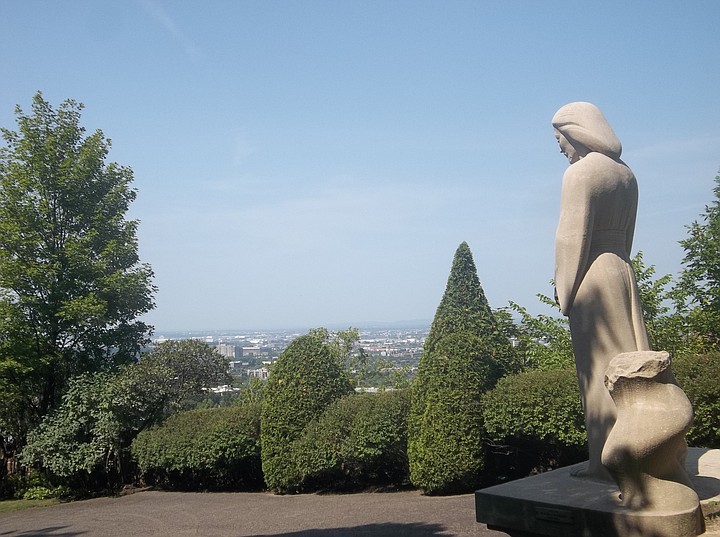
My favorite part of the Oratory was the sculpture garden. Elegant sculptures depicting the 12 apostles and Stations of the Cross are scattered about the garden. A stroll along the garden path culminates with a reflection pool – an ideal place to pause and relax after all the walking.
This church is less visited than Montreal's Notre Dame Basilica, but I found it a more rewarding visit. In the midst of a busy traveling schedule, I value the calm, peaceful feeling a place like St. Joseph’s Oratory inspires.
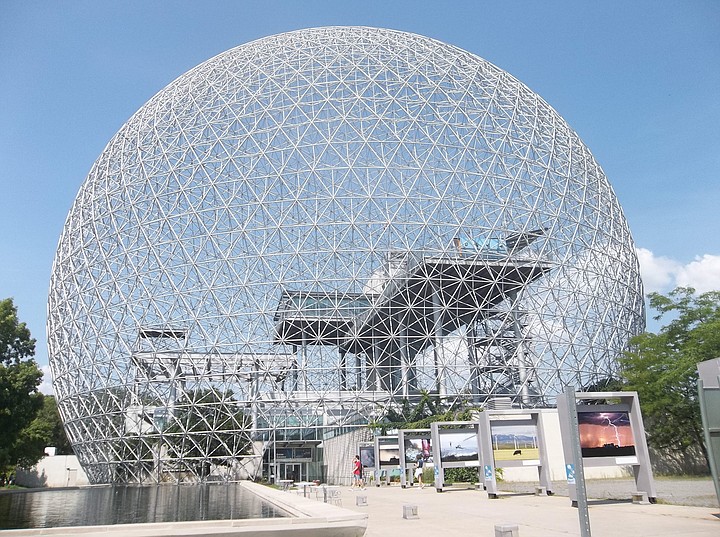
My favorite stop in Montreal was the Biosphere, a 20-story-high geodesic dome on an island in the St. Lawrence River. It’s impressive to just stand and look up at the dome towering over the reflecting pools. It’s another feeling to go inside – like stepping into an alternate world, one of vision and sustainability.
The Biosphere was designed by Buckminster Fuller for the Montreal World Expo of 1967. Fuller is considered one of the foremost geniuses of our time – particularly in the field of design – and is sometimes called a comprehensivist because of his wide range of interests and endeavors. The Biosphere is now an environmental museum that specializes in alternative resources and environmental causes, issues that drove and inspired him.
One of the most interesting exhibits detailed renewable energy sources. “80% of our energy comes from non-renewable sources,” one of the descriptive placards informs you. Another exhibit on the Arctic and climate change included videos presenting accounts by indigenous peoples on the contrast between their current lifestyle and their lifestyle in earlier decades.
I stepped outside onto the deck and wandered past the electric car on display to enjoy a view of downtown Montreal from within the dome (top). My third panoramic view of the city skyline today!
Kids will especially enjoy a visit to Biosphere, as there are many interactive exhibits. One allows you to power electric devices such as fans and light bulbs by walking on a treadmill. Another offers the opportunity to experiment in a lab, gathering evidence with the assistance of a staff member to determine “Which is worse: air or water pollution?” To attract young visitors, the museum allows anyone under 17 in for free.
If you have any interest in nature, architecture, or the environment, this is an essential stop in Montreal.
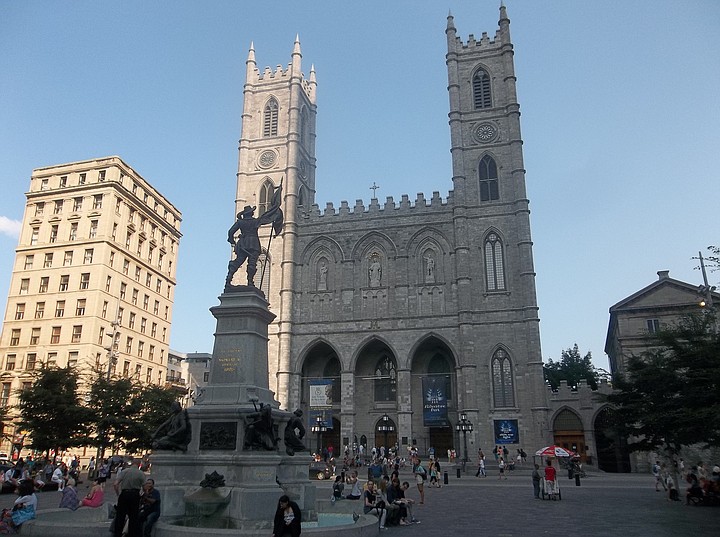
Strolling the streets and shops of Old Town Montreal is a pleasant way to while away the afternoon. It’s one of the best preserved old towns I’ve seen, and the cobblestone streets contribute to the European ambiance. St. Paul Street, the oldest street in the city, was the center of the fur trade back in the 1670s. Today it offers a variety of shops (some interesting, others tacky and overpriced), art galleries, restaurants and sidewalk cafes that can help you occupy an afternoon, or even an entire day.
A visit to the Basilica of Notre Dame Cathedral is highly recommended. The interior of the cathedral is one of the most stirring and magnificent interiors I’ve seen. The church dates from 1824. Next to Notre Dame is the oldest building in Montreal, the Vieux Séminaire de St-Sulpice, built in 1657. The Pointe-à-Callière (Museum of Archaeology and History) is also worthwhile to explore while in old Montreal.
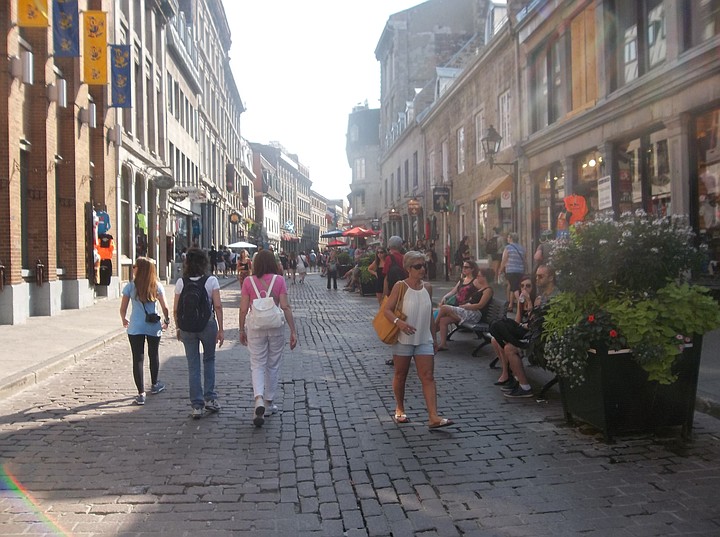
At the end of a day of much walking, it was enjoyable to relax in the Place d’ Armes square adjoining the cathedral and simply people watch. There are many other aspects of Montreal I would like to explore on my next trip, including the Botanical Gardens and the Biodome (not to be confused with Biosphere). But now, after a packed day, it was time to do nothing and simply watch.
I savored these precious moments in yet another unfamiliar, but friendly land.


Despite being a large city, a worthwhile sampling of Montreal can be explored in one day.
A clean and efficient metro system makes the city easy to navigate. Some advanced planning is recommended, however; not all metro employees speak English (as I quickly discovered at my first metro stop). This is French-speaking Quebec, after all!
Upon arriving at the Montreal train station following a day on Amtrak’s scenic Adirondack route from New York City, I walked a short stretch to the metro stop. After overcoming the aforementioned language barrier and getting quickly oriented, I deduced the correct subway for my destination.
My AirBnb room was conveniently located one block from my metro stop – a happy and unplanned coincidence. As well as providing laundry privileges, my host was a source of much valuable practical information, such as the best metro stops from which to hike up Mount Royal and explore old Montreal (Peel and Place d’Armes, respectively). She also eased my language issue concerns, assuring me that despite my experience at the metro stop, “Most people here speak English.”
Indeed, I had no similar issues with language or metro confusion for the remainder of my trip. I’m starting to love AirBnB!

My exploration of Montreal began early the next morning when I climbed Mount (or Mont) Royal to the Kondiaronk Lookout. I was rewarded with a magnificent panoramic view of the city and the St. Lawrence River. It’s an invigorating but not overly strenuous walk up the hill. I paced myself, pausing to watch the bicyclists, joggers and dog walkers.
This is a good opportunity to meet and chat with locals, as many of them come here to relax, exercise and enjoy the natural setting and expansive views.
The Parc du Mont-Royal on top of the mountain is one of the finest urban green spots that I’ve seen. It was designed by Fredrick Law Olmstead, who also designed Central Park in New York City. At the top of the hill, the Chalet du Mont-Royal adjoins the lookout, providing free maps, restrooms and vending machines. Artwork on the walls depict various stages in Canadian history.
After you recharge from the hike up the hill, it’s worth continuing through the park and down a road alongside a cemetery that leads to the St. Joseph’s Oratory.
The church’s impressive dome (third-largest in the world) can be seen from a distance. With its sacred ambiance, resplendent sculpture garden and sweeping view of the city, St Joseph’s has been called the spiritual epicenter of Montreal. After climbing the 99 steps to the church’s door, look back to admire the magnificent view. An escalator spares you additional climbing and provides access to the various upper levels. There’s also a shuttle that can take you to the top.
The Votive Chapel contains 10,000 candles and the tomb of Brother Andre, perhaps the most revered spiritual figure in Montreal’s history. I passed by his humble room or “cell,” consisting of a bed and cooking stove. Canonized by Pope John Paul in 2010, Brother Andre is now Saint Andre.

My favorite part of the Oratory was the sculpture garden. Elegant sculptures depicting the 12 apostles and Stations of the Cross are scattered about the garden. A stroll along the garden path culminates with a reflection pool – an ideal place to pause and relax after all the walking.
This church is less visited than Montreal's Notre Dame Basilica, but I found it a more rewarding visit. In the midst of a busy traveling schedule, I value the calm, peaceful feeling a place like St. Joseph’s Oratory inspires.

My favorite stop in Montreal was the Biosphere, a 20-story-high geodesic dome on an island in the St. Lawrence River. It’s impressive to just stand and look up at the dome towering over the reflecting pools. It’s another feeling to go inside – like stepping into an alternate world, one of vision and sustainability.
The Biosphere was designed by Buckminster Fuller for the Montreal World Expo of 1967. Fuller is considered one of the foremost geniuses of our time – particularly in the field of design – and is sometimes called a comprehensivist because of his wide range of interests and endeavors. The Biosphere is now an environmental museum that specializes in alternative resources and environmental causes, issues that drove and inspired him.
One of the most interesting exhibits detailed renewable energy sources. “80% of our energy comes from non-renewable sources,” one of the descriptive placards informs you. Another exhibit on the Arctic and climate change included videos presenting accounts by indigenous peoples on the contrast between their current lifestyle and their lifestyle in earlier decades.
I stepped outside onto the deck and wandered past the electric car on display to enjoy a view of downtown Montreal from within the dome (top). My third panoramic view of the city skyline today!
Kids will especially enjoy a visit to Biosphere, as there are many interactive exhibits. One allows you to power electric devices such as fans and light bulbs by walking on a treadmill. Another offers the opportunity to experiment in a lab, gathering evidence with the assistance of a staff member to determine “Which is worse: air or water pollution?” To attract young visitors, the museum allows anyone under 17 in for free.
If you have any interest in nature, architecture, or the environment, this is an essential stop in Montreal.

Strolling the streets and shops of Old Town Montreal is a pleasant way to while away the afternoon. It’s one of the best preserved old towns I’ve seen, and the cobblestone streets contribute to the European ambiance. St. Paul Street, the oldest street in the city, was the center of the fur trade back in the 1670s. Today it offers a variety of shops (some interesting, others tacky and overpriced), art galleries, restaurants and sidewalk cafes that can help you occupy an afternoon, or even an entire day.
A visit to the Basilica of Notre Dame Cathedral is highly recommended. The interior of the cathedral is one of the most stirring and magnificent interiors I’ve seen. The church dates from 1824. Next to Notre Dame is the oldest building in Montreal, the Vieux Séminaire de St-Sulpice, built in 1657. The Pointe-à-Callière (Museum of Archaeology and History) is also worthwhile to explore while in old Montreal.

At the end of a day of much walking, it was enjoyable to relax in the Place d’ Armes square adjoining the cathedral and simply people watch. There are many other aspects of Montreal I would like to explore on my next trip, including the Botanical Gardens and the Biodome (not to be confused with Biosphere). But now, after a packed day, it was time to do nothing and simply watch.
I savored these precious moments in yet another unfamiliar, but friendly land.
Comments